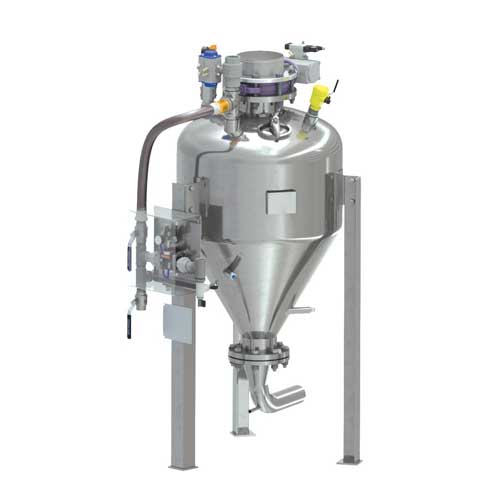


Dense Phase Vacuum Conveying Systems use high capacity vacuum pumps (up to 99% Vacuum) to convey materials from a feed hopper or silo to a Receiving Vessel (also known as a Vacuum Hopper) where the air and product are separated by a filter. When this vessel is full, the vacuum is isolated and the conveyed product discharged into the destination silo. The product conveys through the pipeline at a controlled low velocity, usually in a fluidized state to reduce friction and pressure drop. Systems generally operate on a batch basis as follows:
Valves and sensors are used throughout the system to control the applied vacuum and product fluidization settings and velocities at all parts of the system to ensure smooth reliable conveying of the product.
Dense Phase Vacuum Conveying Systems are particularly suitable for systems, which convey materials at high capacities over short to medium distances, from multiple sources to a single or multiple destinations.
The low convey velocities and vacuum method make it particularly suitable for Food, Dairy and Pharmaceutical applications with friable or fragile agglomerated powders.
| Parameter | Specification |
|---|---|
| Convey Rates | Medium, up to 5 ton/hr (higher with multiple vessels) |
| Convey Velocities | Low, 0.5-8 m/s |
| Convey Distances | Medium, up to 100m (longer with push-pull systems) |
| Air Mover | Vacuum Pump (Dry Vane, Oil or Water Sealed) |
| Operating Pressure | Up to 99% Vacuum |
| Material/Air Ratios | Medium, up to 50 kg/kg |
To optimize the system various techniques are used to enhance operation, and additional options for specialized applications are available: